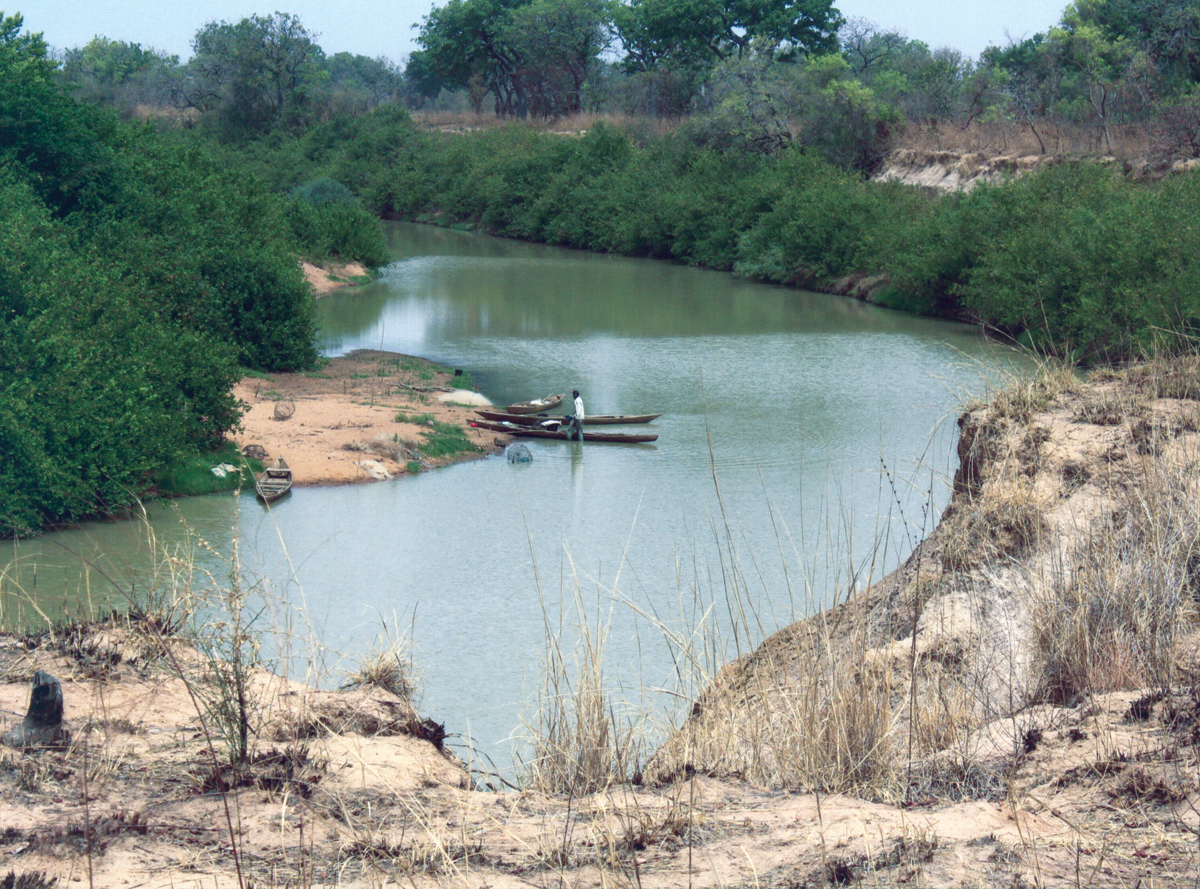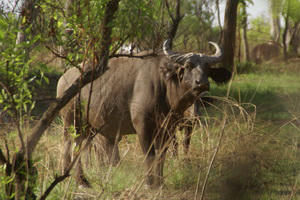Bigfoot Est Mort – Tracking A Wizened Old Bull
 Walking back to the truck, my PH, Jean François Meslin, wondered out loud where those three bulls were? “There,” I said. Jean François pointed to his shoulder for a rest and I shot. Little did I know 66 years ago that I, with my wife Frances, would end up in this part of the world: Benin, in western Africa.
Walking back to the truck, my PH, Jean François Meslin, wondered out loud where those three bulls were? “There,” I said. Jean François pointed to his shoulder for a rest and I shot. Little did I know 66 years ago that I, with my wife Frances, would end up in this part of the world: Benin, in western Africa.
On most trips, the hunter may see his quarry for only a second or two before he pulls the trigger. Other times he spots the animal and may stalk for several hours or longer before he takes the shot. Others may take days or even years before the specific animal is taken. This is the story of one, a western Savannah buffalo I named Bigfoot because of his deformed right hind leg.
 Most buffalos are herding animals living in family or bachelor groups, but not Bigfoot. He was a “loner,” drinking at a small waterhole not much bigger than a bathtub at first light and then feeding back to the safe confines of the national park.
Most buffalos are herding animals living in family or bachelor groups, but not Bigfoot. He was a “loner,” drinking at a small waterhole not much bigger than a bathtub at first light and then feeding back to the safe confines of the national park.
The first morning that Jean François and I followed his spoor he seemed to be enjoying himself, feeding back and forth which made tracking slow, especially through the mounds of dirt made by worms during the rainy season that are now so hardened that the foot of an elephant does not entirely flatten them. After several hours we become aware that he was no longer feeding but moving in a straight line back to the park, probably sensing that we are following him.
He forced us to track him through grass that in some places was over our heads. Jean François decided this was too dangerous so we headed back to the truck along an open area that had been burned previously. Ambling up in front is a buffalo. Jean François and I took off at an angle, trying to cut him off. He stopped. Jean François set up the sticks. I aimed the Dakota 76 .375 H&H on his shoulder. But before I pulled the trigger, Jean François said something. I looked over at him and the buffalo was gone. Gone into the park.
Thus began a fifteen-day challenge to see if we could outsmart Bigfoot. Over the course of several days, we followed his spoor, but he was no longer feeding after watering. Instead he headed straight back into Pendjari. We decided to give him a rest and hunt other animals. I took harnessed bushbuck, sing sing waterbuck, western kob, nagor reedbuck and western bush duiker. Benin is tough, with lots of walking, 90-degree nights and 120-degree days everyday, with dusty conditions and wind blowing off the Sahara desert to the north, putting fine grey sand in the air that from a distance looks like smog.
Our next try for Bigfoot found us at the same pool and, being a creature of habit, we picked up his track again. Jean François, three trackers and I followed Bigfoot for several hours when Jean François and I spotted him standing under a small tree. Jean François likes to use three trackers; two follow the spoor pointing with a stick, while the third is supposed to be looking ahead. We looked over and all three were looking down and talking to each other. We finally got their attention but it was too late. Two for Bigfoot, zero for hunters.
Luckily, this was a 20-day hunt and not 13, for we were then into day 15.
Early in the morning of the 16th day, we went to Bigfoot’s waterhole but saw no tracks. We headed north on the same road where Jean François knew of another small waterhole about 500 meters from the first one and sure enough, there was his track. Bigfoot was one smart buffalo.
That morning seemed different. We covered more than 35 miles following him and I felt like I understood him. I felt like something was wrong — like he was giving up. He meandered back and forth to the brush, but was not feeding. It was like he was waiting for us to catch up, or maybe he was setting an ambush for us.
One and a half hours into the stalk we came around a big bush and there stood Bigfoot, less than twenty yards away. All three trackers pointed and, with no time for the shooting sticks, I put the gun to my shoulder, pulled the trigger and heard a deafening “click.” I opened the action and a shell flew. “Misfire!” The first I have had with this rifle in over twenty years.
Bigfoot just stood there waiting for me to fire — he had given up. The .375 fired the second time, taking the buffalo square in the shoulder, but he took off. I ran while shooting and reloading over a distance of about 150 yards when Bigfoot stopped and just looked at me. I used a tree for a rest and put two more rounds into his shoulder. It was done. He did not collapse onto his side, but settled down on all four feet like a brain-shot elephant. My wife Frances wrote in her diary. ‚ÄúBigfoot est mort‚Äù Bigfoot is Dead. ‚ÄúHe gave up this life on a sweet spring morning; A hunter‚Äôs bullet, straight and sure put him down in the end, but he bore the scars of 18 years of hard life as well. A lead ball the size of a marble, two fragments from a Breneke rifled slug were retrieved from his body.‚Äù
Looking down upon him I did not feel any joy, just sorrow. I was glad to end his suffering. His right hind hoof was deformed due to an abscess and infection the size of a football in his hip. His left horn was broken off halfway up, probably many years ago, but polished round and shiny like ebony, almost like a regal crown. Tracker Daniel sprinkled water upon him as a final tribute or blessing. Jean François has been hunting this area for fourteen years but has never seen a buffalo this old and with so many scars and bullets in him. He figured he is at least 18 to 20 years old. This western Savannah buffalo that I named “Bigfoot” may not be legend, but he is in my book. Over the two weeks and approximately forty miles of following his track, I feel I became part of him and he part of me.—Jim August

